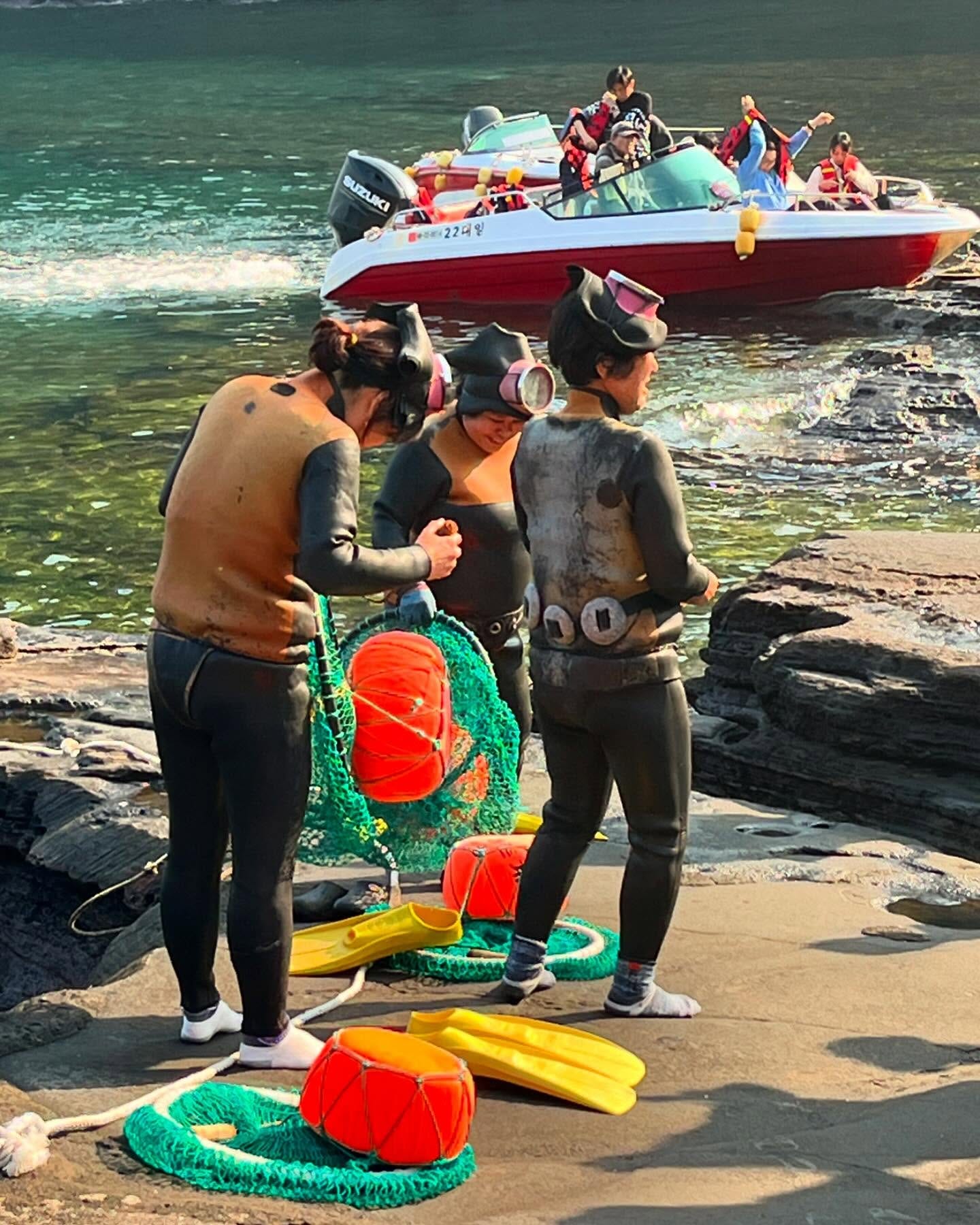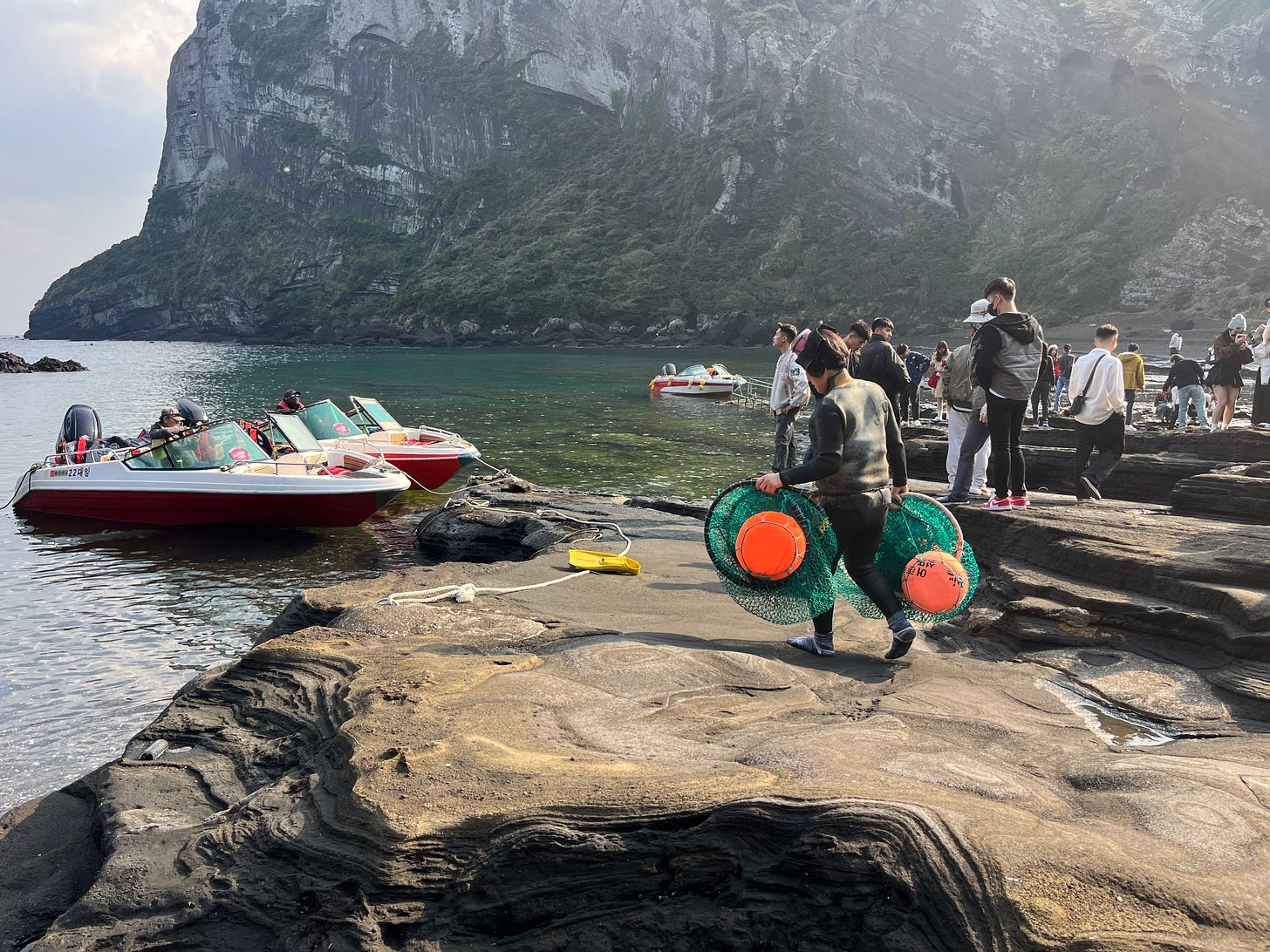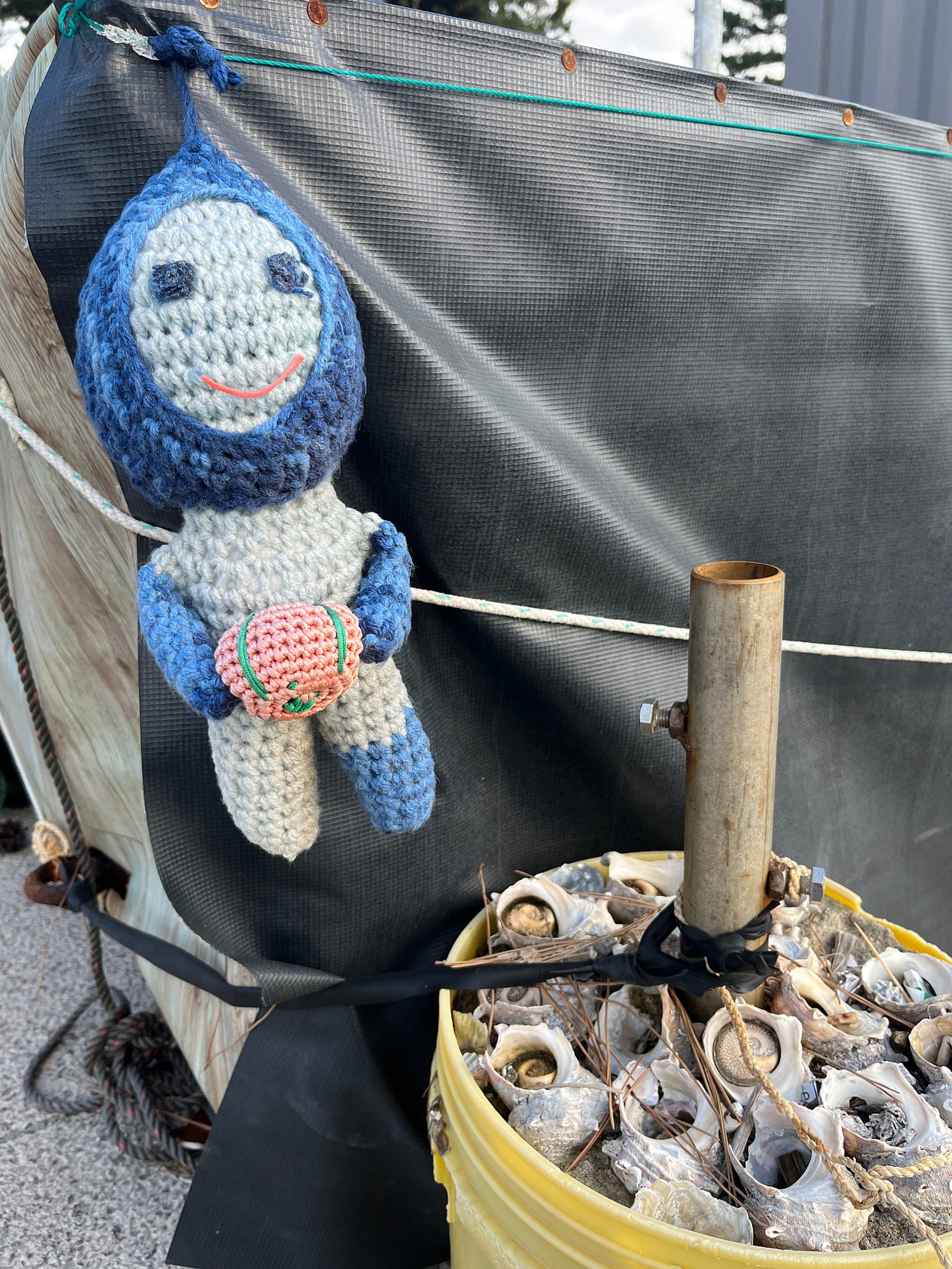Dear friends,
I had one goal in going to Jeju Island, South Korea: Meet the Sea Women.
I started diving a year ago, and it’s become my favorite way to slow down and be fully present in my surroundings. When I learned about the Haenyeo, women free divers who catch seafood without oxygen, I was entranced. Here were women, aged 50 to 80, diving to depths of 65 feet (20m) in chilly December, upholding a tradition dating back to the 17th century.
Haenyeo culture was born of necessity. Originally, men and women dove together; men were called “pojak” while women were “jamnyeo.” However, a large number of men lost their lives fishing or went to war. This, coupled with a government tax on men’s earnings, pushed women to become the main breadwinners for their families.
Girls start training around the age of 10, sometimes younger, as they catch sea urchins, abalone, and sea cucumbers, unaided by oxygen tanks.
Free diving is not as effortless as the professionals make it look. What was once a method of survival has become an international sport with competitions held around the world. And, with free diving, comes fatalities. The practice can be dangerous and lead to injuries, and Haenyeo risk their lives every time they dive. It can be difficult work that sometimes has the women spending up to seven hours in the sea.
Due to the challenges, the Haenyeo way of life is slowly fading. Many women are in their later years and retiring, and there’s less incentive for younger people to take on demanding, dangerous work. A recent documentary on Apple TV goes as far as to label the current generation of Haenyeo as the “The Last of the Sea Women.”

However, work is being done to preserve and celebrate Haenyeo heritage. I was able to see the Haenyeo dive show at Seongsan Ilchulbong and taste a fresh-caught feast at Yongmeori Coast. I was thankful to see these professionals in their element during the dive show. Even though it was part of a performance for visitors, the Haenyeo were still going about their professional work like normal.
In 2016, UNESCO declared the Haenyeo of Jeju Island, part of the “Intangible Cultural Heritage of Humanity.” According to the global organization, Haenyeo culture contributed to “the advancement of women’s status in the community and promoted environmental sustainability with its eco-friendly methods and community involvement in management of fishing practices.”
The women have been gracious with visitors, going as far as to collaborate with the local Jeju Tourism Organization to create Haenyeo experiences, which allow visitors to experience firsthand a day-in-the-life of a free diver. The island also has a Jeju Haenyeo Museum, where people can learn more about the history of a diving culture that dates back centuries.

Seeing these dive professionals in action was a highlight of my time in Jeju Island and South Korea. I’m not sure what the future will hold as women seek better, safer opportunities for themselves and their families. However, I’m grateful to today’s Haenyeo as they let visitors experience a hint of the heritage and magic of free diving.










Fascinating! So happy you got to experience this and thank you for sharing it with us! Such courageous women - I can't believe some of them are 80 years old doing this!
Being a photography nut, I cannot help myself. Your images are super. I wanted to introduce you to Yoshiyuki Iwase. I bought an exhibition print (huge) of his many years ago. He passed away at 97 about 25 years ago. He is credited with making the Sea Women a subject of great importance in Japanese photography. There is lots of his work online, but in case you haven't come across him, you might enjoy a quick search.